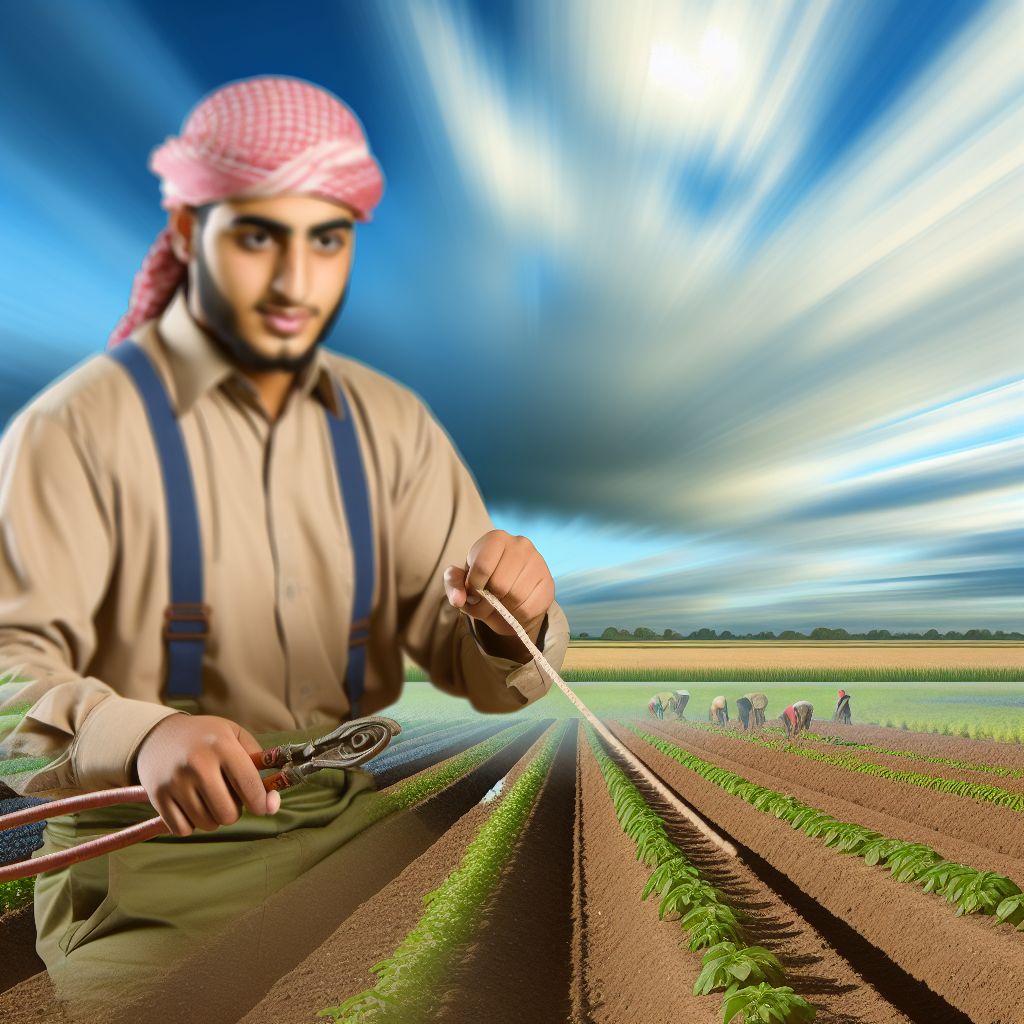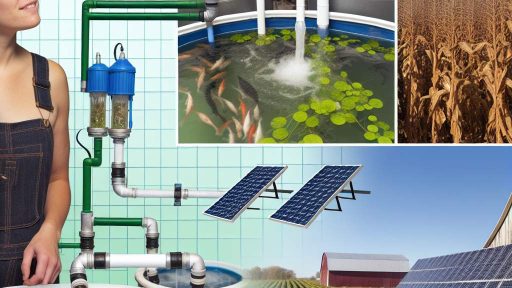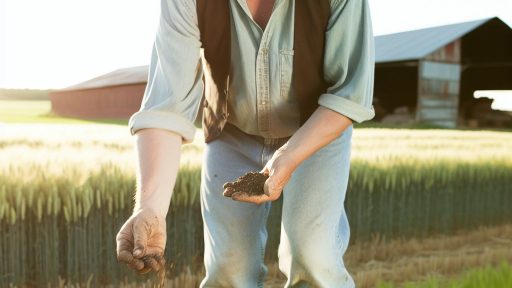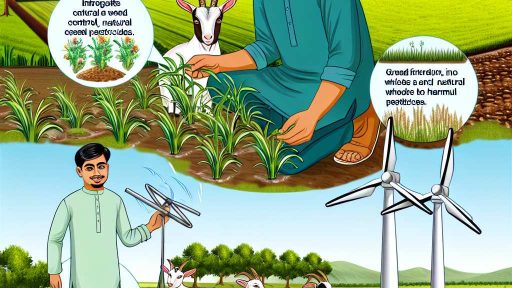Introduction to Sustainable Crop Rotation
Definitions
Sustainable crop rotation refers to the practice of alternating different crops in a specific sequence.
This method enhances soil health and reduces pest infestations.
Farmers can improve crop yields by increasing plant diversity.
Benefits
Implementing sustainable crop rotation offers numerous advantages.
Improved soil structure leads to better water retention.
This practice also reduces the need for chemical fertilizers.
Additionally, it minimizes the risk of soil erosion.
Pest and Disease Management
Crop rotation effectively disrupts pest and disease life cycles.
Farmers can use this strategy to manage common agricultural pests.
By changing crops, harmful organisms find it difficult to establish themselves.
Nutrient Management
Different crops require varying nutrients from the soil.
Crop rotation helps balance nutrient demands over time.
This practice can naturally replenish soil nutrients, reducing chemical inputs.
Enhancing Biodiversity
Crop rotation fosters a more diverse agricultural ecosystem.
This diversity supports beneficial insects and wildlife populations.
Transform Your Agribusiness
Unlock your farm's potential with expert advice tailored to your needs. Get actionable steps that drive real results.
Get StartedEach crop contributes to a healthier farming environment.
Understanding Soil Health: The Role of Crop Rotation in Nutrient Management
Importance of Soil Health
Soyl health is fundamental to sustainable agriculture.
Healthy soil promotes plant growth and resilience.
It supports various biological activities that enhance nutrient cycling.
Furthermore, healthy soil can improve water retention and reduce erosion.
Crop Rotation Explained
Crop rotation involves alternating the types of crops grown in a specific area.
This practice helps manage soil fertility and pest populations effectively.
It breaks pest and disease cycles associated with monocropping.
Moreover, different crops contribute unique nutrients to the soil.
Building Soil Nutrients
Certain crops enrich the soil in specific ways.
For instance, legumes fix nitrogen, which improves soil fertility.
Additionally, deep-rooted crops can help to access and recycle nutrients.
This minimizes the need for synthetic fertilizers over time.
Enhancing Soil Structure
Crop rotation can improve soil structure and aeration.
Different root systems can create diverse pathways in the soil.
This encourages water infiltration and reduces compaction.
As a result, roots can grow more easily, leading to healthier plants.
Reducing Soil Erosion
Regularly changing crops can help prevent soil erosion.
Cover crops, in particular, protect the soil surface from wind and water.
They bind the soil, reducing the likelihood of erosion during rains.
Ultimately, this enhances the farm’s long-term productivity.
Pest and Disease Management
Crop rotation effectively disrupts pest and disease life cycles.
This strategy allows for natural pest control mechanisms to function better.
With fewer pests, farmers can reduce pesticide use significantly.
Showcase Your Farming Business
Publish your professional farming services profile on our blog for a one-time fee of $200 and reach a dedicated audience of farmers and agribusiness owners.
Publish Your ProfileConsequently, this leads to healthier crops and safer food products.
Implementing a Rotation Plan
Cultivators should create a tailored crop rotation plan.
This plan must consider local climate, soil types, and market demands.
Farmers can consult agricultural experts for guidance on best practices.
Regular assessment and adjustments will optimize crop yields and soil health.
Selecting Crops for Rotation
Importance of Crop Diversity
Crop diversity enhances soil fertility and prevents pest outbreaks.
It reduces the need for chemical fertilizers and pesticides.
Furthermore, diverse crops can improve overall ecosystem health.
Types of Crops to Consider
Legumes are excellent for enriching soil nitrogen levels.
Root crops, such as carrots and beets, improve soil structure.
Grain crops provide essential nutrients and cover ground effectively.
Seasonal Considerations
Understanding seasonal patterns is crucial for effective rotation.
Cool-season crops can thrive in early spring or late fall.
Warm-season crops are best planted after the last frost.
Integrating Perennials
Incorporating perennial crops can stabilize the soil.
These crops require less frequent replanting, reducing soil disturbance.
They also contribute to greater biodiversity on the farm.
Specific Crop Rotation Examples
- Plant corn followed by soybeans to fix nitrogen.
- Rotate with wheat to break disease cycles.
- Integrate cover crops like clover during off-seasons.
Monitoring and Adjusting Crop Plans
Regularly monitor soil health to inform crop decisions.
Adjust rotation plans based on yield performance and market demand.
This flexibility can significantly enhance sustainability.
Find Out More: Permaculture Principles for Effective Farm Diversification
Pest and Disease Management: How Crop Rotation Reduces Infestations
Understanding Crop Rotation
Crop rotation involves alternating different types of crops in a specific order over time.
This method disrupts the life cycles of pests and diseases.
By changing crops, farmers can reduce the dependency on chemical pesticides.
Moreover, rotating crops helps maintain soil nutrients and improve soil health.
The Role of Diversity in Farming
Diversifying crops is key to effective pest management.
Different crops attract different pests, which helps control their populations.
For example, planting legumes can fix nitrogen in the soil, benefiting subsequent crops.
This diversity creates a balanced ecosystem that supports beneficial insects.
Targeting Specific Pests
Certain pests are host-specific, meaning they thrive on specific crops.
By rotating crops, farmers can starve out pests that depend on particular plants.
This leads to a natural decline in pest populations over time.
Additionally, avoiding planting the same crop year after year disrupts pest reproduction cycles.
Managing Soil-Borne Diseases
Soil-borne diseases can ravage crops and reduce yields.
Crop rotation helps break the cycle of these diseases in the soil.
For instance, rotating root vegetables with grains can significantly reduce disease incidence.
This strategy encourages healthier crops and enhances overall farm productivity.
Integrating Cultural Practices
Alongside crop rotation, integrating other cultural practices enhances pest management.
Practices such as cover cropping and intercropping further support pest control efforts.
These methods improve soil health and contribute to a holistic approach to farming.
Showcase Your Farming Business
Publish your professional farming services profile on our blog for a one-time fee of $200 and reach a dedicated audience of farmers and agribusiness owners.
Publish Your ProfileFarmers can benefit from increased resilience against pests and diseases.
You Might Also Like: Organic Farming as a Diversification Approach
Economic Advantages of Crop Rotation
Cost Savings
Implementing crop rotation leads to significant cost savings for farmers.
By rotating crops, farmers can reduce the need for chemical fertilizers.
This decrease in chemical use lowers overall input costs.
Moreover, crop rotation helps control pests naturally.
As a result, farmers spend less on pesticides over time.
Additionally, rotating crops can improve soil health.
Healthy soil reduces the need for expensive soil amendments.
Consequently, farmers can maximize profitability through sustainable practices.
Yield Improvements
Crop rotation enhances overall yield on farms.
Diverse crops can lead to healthier soil organisms.
These organisms improve soil structure and fertility.
Furthermore, rotating crops can break pest and disease cycles.
This practice results in healthier plants and better yields.
Research shows that farms utilizing crop rotation see increased production.
For instance, legumes can add nitrogen back into the soil.
This natural fertilization boosts subsequent crop growth.
Thus, farmers benefit from both immediate and long-term yield enhancements.
Gain More Insights: Smart Farming Solutions Enhancing Agricultural Efficiency
Implementing an Effective Crop Rotation Plan
Understanding Crop Rotation
Crop rotation is the practice of growing different crops sequentially on the same land.
This strategy enhances soil health and disrupts the life cycles of pests.
Furthermore, it can prevent soil depletion and manage weeds naturally.
Assessing Soil Health
Start by evaluating the existing soil conditions on your farm.
Conduct soil tests to identify nutrient levels and pH balance.
Consider organic matter content as it influences soil fertility.
Address any deficiencies before planning your crop rotation.
Selecting Appropriate Crops
Choose crops that complement each other in terms of nutrient requirements.
Incorporate legumes to naturally fix nitrogen in the soil.
Rotate deep-rooted and shallow-rooted plants to maximize nutrient uptake.
For example, follow cereal crops with broadleaf crops.
Developing a Rotation Schedule
Create a planting schedule that outlines crop sequences for each field.
Maintain variety to reduce pest and disease risks.
Consider seasonal planting dates and harvest times for each crop.
Map out a multi-year plan to ensure long-term success.
Monitoring and Adjusting the Plan
Regularly monitor crop performance and soil health.
Assess pest and weed populations frequently throughout the growing season.
Adjust your rotation plan based on observed results and challenges.
Stay flexible and responsive to changes in environmental conditions.
Educating Yourself and Others
Take time to learn about the benefits of crop rotation.
Showcase Your Farming Business
Publish your professional farming services profile on our blog for a one-time fee of $200 and reach a dedicated audience of farmers and agribusiness owners.
Publish Your ProfileParticipate in workshops and training sessions on sustainable practices.
Share your experiences with fellow farmers to foster knowledge exchange.
Consider collaborating with agricultural extension services for expert guidance.
Evaluating Long-Term Outcomes
Conduct evaluations of crop yields and soil health over time.
Evaluate the economic impact of your crop rotation strategies.
Ensure your practices align with sustainable farming goals.
Document your findings to refine future crop rotation plans.
You Might Also Like: Automating Farm Operations With Cutting Edge Tools

Case Studies: Success Stories of Sustainable Crop Rotation Practices
Overview of Successful Implementations
Sustainable crop rotation practices have transformed many farming operations.
Farmers across various regions have reported increased yields and soil health.
These practices reduce pest populations and the need for chemical inputs.
Moreover, they enhance resilience against climate change impacts.
Example of the Green Valley Farm
Green Valley Farm in Oregon implemented a diverse crop rotation strategy.
They rotate between legumes, grains, and cover crops each season.
This approach improves soil nitrogen levels significantly.
Consequently, Green Valley saw a 30% increase in yield over five years.
Benefits Experienced
The crop rotation helped in reducing crop disease prevalence.
Farmers also noted less reliance on chemical fertilizers.
Furthermore, biodiversity on the farm increased remarkably.
Success at Meadow Creek Organic Farm
Meadow Creek Organic Farm adopted a methodical rotation of vegetables.
Each year, they change planting locations for different crops.
This practice minimizes soil depletion and pest issues.
In return, they achieved higher organic certification standards.
Improvements Observed
The farm reported a 40% decrease in pest infestations.
Moreover, they enhanced soil quality through strategic planting.
As a result, Meadow Creek secured better market prices for produce.
Innovations in Crop Rotation
Technology plays a crucial role in modern crop rotation strategies.
Agricultural software allows farmers to track crop health and yields.
This data helps in planning future rotations efficiently.
For example, precision agriculture tools guide planting decisions based on soil health.
Case Study: EcoFarm Tech
EcoFarm Tech integrates innovative tools for crop monitoring.
Farmers receive timely data on soil nutrients and moisture levels.
This practice enables targeted crop rotation decisions.
Consequently, EcoFarm Tech reported a 25% increase in productivity.
Lessons Learned from Successful Farmers
Implementing sustainable crop rotation requires careful planning.
Farmers should consider their local climate and soil conditions.
Collaboration with agronomists often leads to better outcomes.
Sharing knowledge among farmers creates a supportive community.
Challenges and Solutions in Crop Rotation
Common Obstacles in Crop Rotation
Farmers often face numerous challenges when implementing crop rotation.
Soil health degradation is a significant issue for many growers.
Showcase Your Farming Business
Publish your professional farming services profile on our blog for a one-time fee of $200 and reach a dedicated audience of farmers and agribusiness owners.
Publish Your ProfileAlso, pests and diseases may become more prevalent between crops.
Weather variability can affect planting and harvesting schedules.
Additionally, lack of knowledge or resources hampers effective crop planning.
Adapting to Soil Health Challenges
Addressing soil health is crucial for successful crop rotation.
Farmers should regularly test their soil to understand its health status.
Using cover crops helps improve soil structure and fertility.
Moreover, implementing organic matter additions can enhance microbial activity.
Consequently, these practices lead to healthier soil and better crop yields.
Managing Pests and Diseases
Evolving pest resistance can challenge crop rotation strategies.
Integrated Pest Management (IPM) techniques can mitigate these risks.
Utilizing natural predators can help control pest populations effectively.
Crop diversity reduces the spread of specific pests and diseases.
Moreover, rotating crops breaks the life cycle of pests, reducing infestations.
Weather Variability Considerations
Adaptation to weather variability is essential for crop rotation success.
Farmers should monitor forecasts to adjust planting and harvesting dates.
Using drought-resistant crop varieties can improve resilience.
Additionally, building irrigation systems ensures consistent water supply.
Practicing conservation tillage helps retain soil moisture under changing conditions.
Building Knowledge and Resource Access
Education plays a pivotal role in effective crop rotation practices.
Farmers should engage in workshops and training sessions on sustainable methods.
Networking with experienced farmers fosters knowledge sharing and resources.
Local agricultural extensions can provide valuable guidance and support.
Furthermore, government programs can assist in funding and resources for sustainable practices.
Future Trends in Crop Rotation
Innovative Practices for Sustainability
Farmers are adopting innovative crop rotation practices worldwide.
These strategies enhance soil health and minimize pest pressures.
Additionally, they help optimize resource use within farming systems.
Many farmers embrace cover crops to improve soil organic matter.
This practice reduces erosion while enhancing nutrient cycling.
Technological Developments in Crop Management
Recent advancements in technology support sustainable crop rotation.
Precision agriculture tools provide data-driven insights for farmers.
Drones monitor crop health and optimize decision-making processes.
Furthermore, software platforms help manage crop rotation schedules effectively.
These technologies facilitate real-time adjustments in farming operations.
Integrating Livestock into Crop Rotation
Integrating livestock within crop rotations promotes ecological balance.
This system utilizes animal manure as a natural fertilizer.
Moreover, it improves soil structure and enhances microbial activity.
Farmers can rotate crops with grazing animals to manage weeds.
This approach leads to healthier crops and sustainable land use.
Community Collaboration and Knowledge Sharing
Collaboration among farmers fosters knowledge sharing for crop rotation.
Local cooperatives organize workshops to discuss sustainable practices.
Showcase Your Farming Business
Publish your professional farming services profile on our blog for a one-time fee of $200 and reach a dedicated audience of farmers and agribusiness owners.
Publish Your ProfileThrough networking, farmers exchange success stories and challenges.
Additionally, universities provide research support for innovative methods.
Collective efforts enhance the overall sustainability of farming systems.
The Role of Policy in Promoting Sustainable Practices
Effective policies encourage farmers to adopt sustainable crop rotation.
Governments offer incentives and subsidies for eco-friendly practices.
Furthermore, legislation promotes research into advanced agricultural methods.
These efforts lead to wider adoption of sustainable farming techniques.
Ultimately, supportive policies strengthen the agricultural community’s resilience.
Additional Resources
Novel approaches and practices to sustainable agriculture …
Resilience in Agriculture through Crop Diversification: Adaptive …




